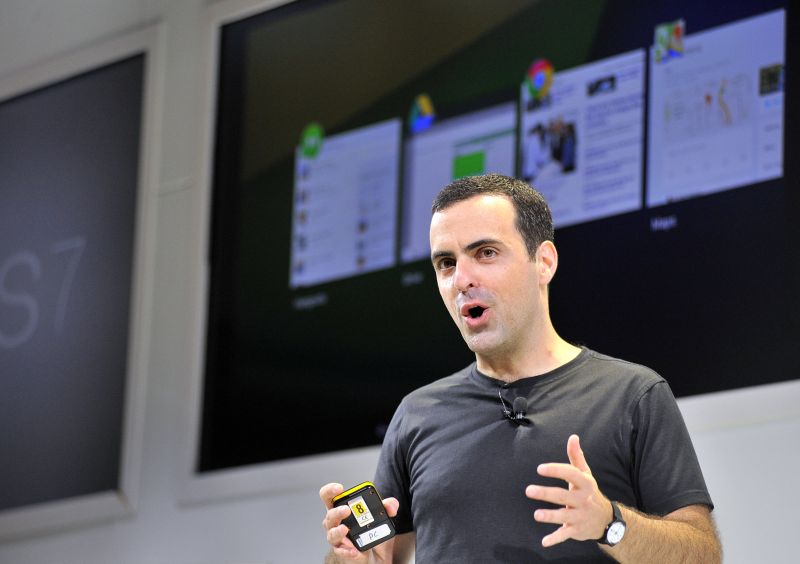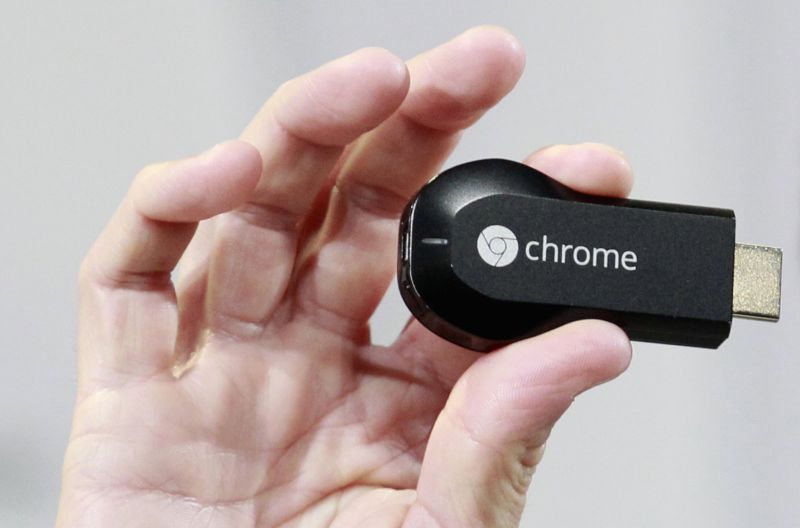There aren’t many gadgets that I’m still using five years after I buy them, except for maybe a laptop. Even then, that’s getting quite long in the tooth given how quickly upgrades arrive these days. Chromecast and Google Cast are still things that I use multiple times a day, every day. When Google first introduced the Chromecast in 2013, the company promised to make any TV with an HDMI port a smart display with the combination of a thumbdrive-like dongle and your home WiFi. That it did, but in the months that followed, Google expanded the tech undergirding its TV accessory well beyond that $35 device.
A device that you simply plug into the back of your television could beam content from your go-to streaming apps to your TV in seconds presented a very attractive option for me. It sounded insane that it could be so simple. There wasn’t any complicated setup or major headaches. It just worked. Chromecast was reliable from the jump, and it allowed people like me to upgrade their TVs for under $50 instead of spending over $1,000 on a new set. I vividly remember the first time I used it: I felt like I was performing some sort of magic trick with my phone and TV as the on-stage help.


Google VP Hugo Barra at the first Chromecast event
When the Chromecast debuted, I already had a smart TV. In fact, it’s still in my living room today. However, my Panasonic set is beginning to show its age, only offering direct access to Amazon Prime Video, Hulu, Netflix and YouTube. While that may be enough for some, it wasn’t for me. As a die-hard sports fan, I need the ability to stream games from ESPN, Fox, NBC Sports, TNT and more on the biggest screen in my house. There’s also the various network apps, requisite software for keeping up with Mr. Robot, Game of Thrones, The Americans (RIP) and more. Basically, having a smart TV wasn’t enough for my streaming habit and the Chromecast was an affordable add-on.
Of course, I’m not really the target audience for this. Google created the Chromecast to give people who didn’t own a smart TV access to all of their streaming apps directly from their phone. That is, so long as their internet-less display has an HDMI port. It’s cheap, easy to setup and uses the device we’re already constantly looking at as the remote.
For a look back at the design process, I spoke to Google’s director of product management Micah Collins. Collins has worked on the Chromecast starting with that first device, and he’s also worked on the Google Home line of Assistant-powered speakers.
„For us, it was about making sure we knew what would put us in good stead for a long period of time on a 1080p television, and get that right,“ Collins explained. „Affordability definitely plays into that.“
Rather than packing the Cast tech inside a set-top box akin to Apple TV, Amazon Fire TV or Roku, Google opted for that diminutive dongle that’s easily hid out of sight. And the Chromecast’s compact design demanded a novel approach.


„The vision never included adding more clutter to your existing TV,“ Collins said. „This presented unique design challenges around packaging the video processing, wireless performance, and power management into a device that could fit into such a form factor, live behind a TV and keep costs affordable.“
By now, I’ve upgraded from the original Chromecast. The WiFi stopped working about three years in, so I had to upgrade to the second-generation puck-like version that debuted in 2015. By then, Google had added an optional ethernet adapter for more reliable connectivity which was a welcome upgrade, even though WiFi had performed well for me throughout.
The Chromecast Ultra would follow in 2016, adding 4K, HDR and a price increase to $69. Most new TVs were internet connected at this point, especially the 4K models. Still, the Chromecast Ultra offered the ease of Cast with high contrast, super sharp visuals — and it was still much less than $100. With this new version, Google has a streaming option that’s still affordable and can handle all the fancy new content that was available for streaming.


The vision never included adding more clutter to your existing TV.
Google director of product management Micah Collins
„When we introduced [Chromecast Ultra], we wanted to support the premium content our users were able to stream,“ Collins said. He explained his team is constantly looking at ways to improve its existing lineup, but there’s nothing new to report in terms of an updated Chromecast device. And Google may not need one just yet: the Chromecast Ultra continues to stand up well to similar products from Amazon and Roku.
Along the way, Collins explained, Google noticed a lot of people were using the Chromecast to play music. To address that, Google wanted to create an audio experience for the home that was scalable. So in 2015, Google announced the Chromecast Audio: another $35 dongle that turns your existing speaker setup into connected gear via a 3.5mm jack. Even though it only handles sound, the Chromecast Audio is still easy to use, a breeze to setup and doesn’t put a dent in your bank account.
„It was very clear, beyond those early video partners, that what people were also doing with Chromecast on TV was listening to music,“ Collins recalled. „For a lot of users, the best speakers in their house are attached to the television.“
He explained that even though the speaker market was growing back in 2015, but those devices were more for personal listening. They weren’t audio gear you’d want to provide the soundtrack for your chill Saturday evening or a gathering of friends.


The Chromecast Audio
„A lot of people made big investments in speakers and don’t want to throw them out to adopt a new protocol“ Collins explained. „So Chromecast Audio was about allowing more people to take the music from where they engage with it the most and give them access to multiroom sound.“ Technologies like Bluetooth are convenient for certain things — like picnics, campsites, the beach and more. However, when you come home and want to listen to music, Bluetooth isn’t a very good option.
„Your expectations are more than a Bluetooth speaker is able to provide,“ Collins continued. „You have to be compatible with multiple devices, multiple users and be able to expand the sound to multiple rooms. That was something Cast was uniquely suited to do.“ In other words, Bluetooth will only get you so far in terms of audio quality, ease of use and features.
Google would eventually open up its Cast tech to be built into connected TVs and speakers. While the audio component was announced in 2015, Vizio debuted the first Cast-enabled TVs in 2016. Cast is even available in the Chrome browser, so you can easily show off whatever you’re looking at on the desktop to your TV or simply send audio and video directly from a Chrome tab.
„When we have user insight about how users are changing their habits, we try to expand access to that as much as possible,“ Collins said. „We did have the intent to figure out the right ways to scale that.“


Engadget/AOL
By late 2016, the smart speaker craze was in high gear, mostly thanks to Amazon and Alexa. That fall, Google revealed its first of three smart speakers, the Google Home. Alongside Google Assistant, the Chromecast and Google Cast sat at the center of Google’s big smart home push — an initiative that also included Nest’s line of home automation gear.
„We were always thinking about the home,“ Collins continued. „Smart home technologies are about understanding the state of things and providing simple ways of controlling them, so for us, we see media as a top use case of the smart home.“ He added that Google has shipped about 55 million Chromecast and Chromecast built-in products, and that includes Google Home, Google Home Mini and Google Home Max.
And, obviously, the major thing that Google Assistant brings to the table is voice control.
„When you know what you want to watch or listen to, there’s not simpler way of getting to it than just asking,“ Collins noted. Other companies are doing this as well. Alexa and Siri can summon whatever your after on speakers and set-top boxes, too. And they all have their individual strengths and weaknesses. I have to restart my Chromecast every few weeks to get things working properly, for example. However, being able to use my phone as the remote instead of having to futz with a separate control is something I still enjoy. That’s one of the main reasons the Chromecast continues to be a staple in my living room. It’s just as reliable and easy to use as it was in 2013.
Images: Josh Edelson/AFP/Getty Images (Hugo Barra), Beck Diefenbach/Reuters (Chromecast in hand)
- This article originally appeared on Engadget.
Website: LINK

